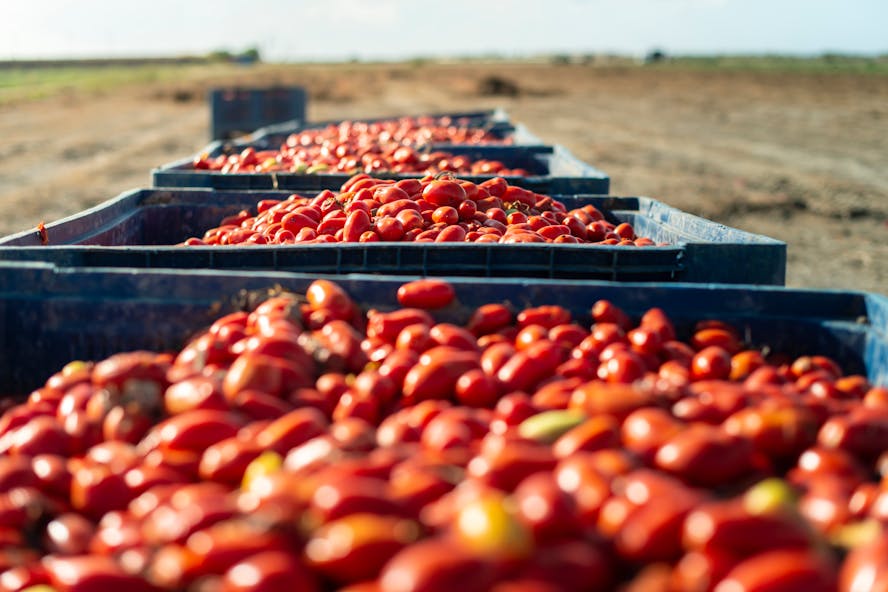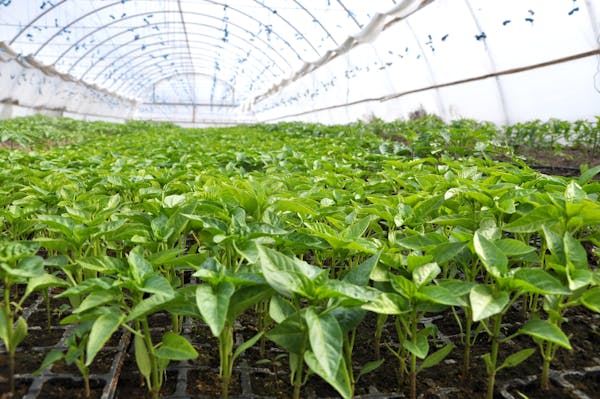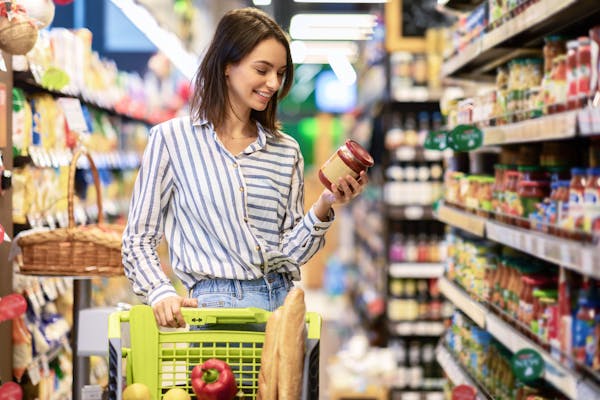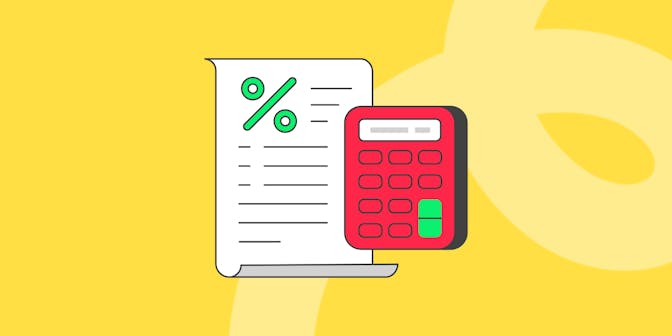Food Miles: How Far Will You Go to Reach Net Zero?
Food miles have been used as an indicator of how sustainable a food product is. But is this approach as accurate and reliable as we thought? Join us around the table as we serve up the facts.

Picture this: It’s the middle of winter and the sun has finally made its long-anticipated appearance. The brighter weather makes you crave something other than beige comfort food for lunch. Incidentally, a fresh salad brimming with colour and crunch feels like it would do just the trick.
Happy with your healthier meal decision (and feeling slightly smug in the process), you write down your shopping list of green beans, asparagus, cherry tomatoes, and romaine lettuce before jumping in the car.
Despite none of these ingredients being in season, you manage to locate all of them in their designated positions on the supermarket shelves. And within an hour, you’re at home tucking into a tuna Niçoise that takes you instantly back to your French holiday last summer. Sounds like just a typical weekday activity, right?
That’s because seasonality is irrelevant when it comes to satisfying our everyday cravings. This convenient level of availability is exactly what we have become accustomed to over the years. Whether it’s strawberries in December or brussels sprouts in July, we now have access to all the food we want, all year round.
These foods have travelled thousands of miles before arriving (pretty much) on our doorstep. What’s more, studies have shown that food transport accounts for 6% of global greenhouse gas emissions. That’s three times more than was previously estimated. So, can we all rely on food miles as an accurate measure of sustainability?
Read ahead to discover the facts you need to know so that you can start to get ‘on board’ with decarbonising your diet, for good.
Food miles: what’s the deal?
Simply put, the term ‘food miles’ refers to how far your food has come before it can be served up on the kitchen table. It’s basically an accessible way of indicating the distance travelled, and the products’ origin.
It’s important not to dismiss the other factors that can impact food miles. These include the carbon intensity of the mode of transport (air, ship, lorries), how it’s grown during specific seasons, and the package production process.
When you think of food miles, it’s easy to assume this encapsulates the distance it travelled from another country. But what about once they touch down on British soil?
Moving food accounts for a quarter of the miles travelled by heavy goods here in the UK, according to a DEFRA report. These add up to 19 million tonnes of CO2 every year. When you think that this equals 5.5 million petrol and diesel cars, it’s no wonder the food and drink industry is one of the biggest carbon emitters.
You may have heard about the 2030 petrol and diesel ban - meaning all new cars will be fully electric. If more manufacturers and suppliers made this switch, we may well see this carbon impact decrease over time.
Then there’s us: the consumers. We travel an average of 135 miles a year in the car just to grab our daily (or weekly) food necessities. There’s plenty to be said for travelling by foot or bike to cut down on those carbon calories.
While for many this isn’t an accessible option, some UK councils have plans to bring 15-minute cities to life. This essentially means residents have everything they need within a 15-minute walk or cycle - including the local supermarket. Head over here to learn more. What Do 15-Minute Cities Mean for UK Drivers? (drive-electric.co.uk)
But does this mean we need to completely home in on staying local to speed up our sustainable food journey? Not so fast. While being conscious of food miles is a smart move, experts have suggested that often it’s more about what we eat than where we eat it from.

Take the tomatoes in that Niçoise salad for example. In the UK, tomatoes are typically grown in gas heated greenhouses throughout the entire year. Compare these with tomatoes grown in countries that see more sun and they’re actually the higher-carbon option.
What’s more, fruit and vegetables that have covered more food miles than beef from a local butcher may still be a lower carbon choice. That’s because cows emit high levels of methane (a strong greenhouse gas) when digesting the food they're given during the agriculture process. Overall, this contributes to 14.5% of global greenhouse gas emissions.
The way things have been transported can also make a big difference. Some foods like those blueberries on your morning porridge need to be flown in as they’re more perishable. This creates up to 10 times more carbon emissions than road transport and a staggering 50 times more than if they were shipped across. In fact, air freight foods contribute to around 11% of the UK’s food transport emissions.

While cutting back on imported food would seem the obvious option, it’s not that simple. 1.5 million people in Africa rely on global trade to the UK. Plus, even if we did stop trading, it would only reduce the UK’s GHG emissions by a minor 0.1%.
So, as you may have grasped, the concept of food miles being an indicator of sustainability isn’t quite as savvy as you’d think. It’s complicated stuff - but don’t worry. Clearer guidance for consumers is already underway.
Thanks to the European Green Deal’s Farm to Fork strategy The Sustainable Farming Incentive | Guides | DriveElectric (drive-electric.co.uk), the introduction of food labels that cover more than just nutrition are expected to be mandatory to hit the net zero targets. This means the front of product packaging will state the climate, environmental and social impact of the food - helping us all to be more sustainability conscious in our everyday shopping decisions.
In the meantime, here’s a few simple things you can do to make more carbon-neutral choices:
-
Focus on eating more seasonal fruit and veg
Foods that are grown in natural sunlight (as opposed to gas-fuelled greenhouses) here in the UK have a lower carbon footprint than out of season produce. What’s more, they’re at their nutritional and taste peak - so your body will thank you, too!
-
Think about reducing your meat intake
If you’re an avid carnivore, it can’t hurt to experiment with a few more plant-based dishes in your weekly meal plan. Legumes and pulses are just as satisfying and make for a much lower-carbon choice.
-
Shop more locally (and mindfully)
Next time you get that craving, why not check out the local independent, market or farm shop for a change? While not everything there is guaranteed to be grown local - most of it will be. Plus, it means less plastic packaging.
-
Make fewer car journeys
Walking, cycling, or taking the bus to your nearest supermarket will help you to cut down on your miles. A small change, but a big difference.
Want to learn more about the food supply chain and how it relates to climate change?
Head on over here:
More guides
6 surprising things you didn’t know about electric vans

Understanding Vehicle Excise Duty (VED) or "Road Tax" for EVs
How to save money on a new car with Salary Sacrifice
